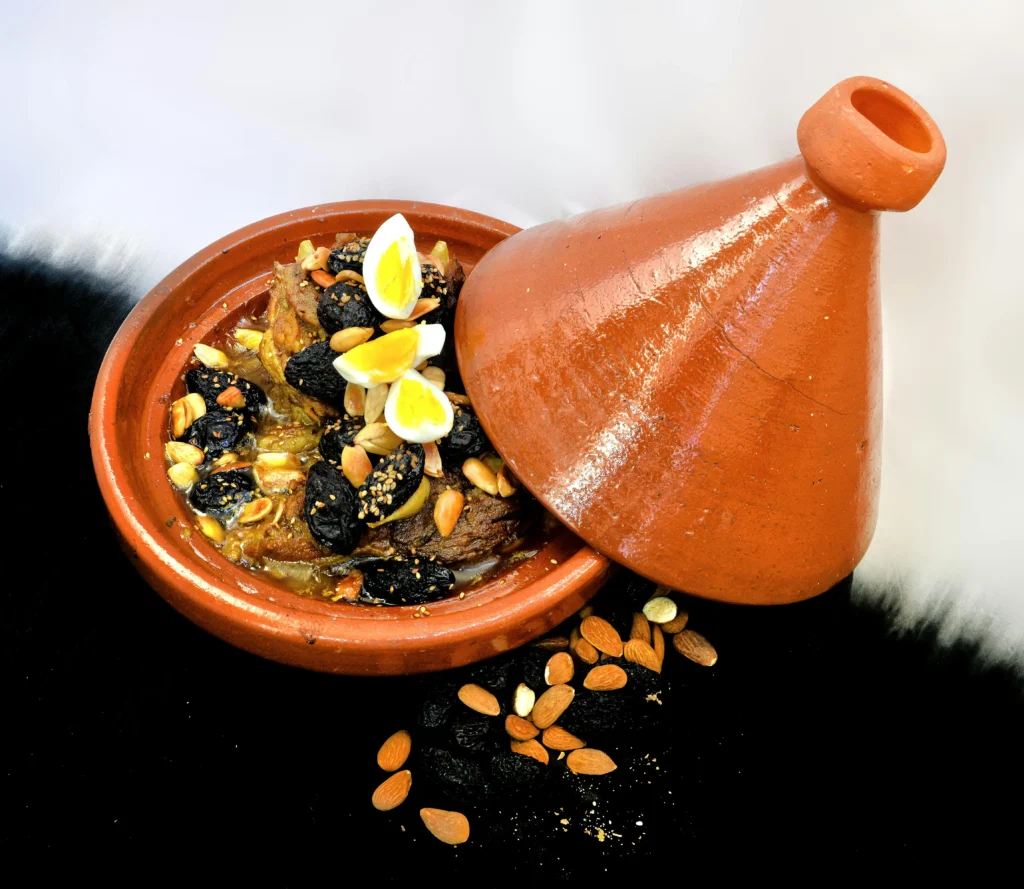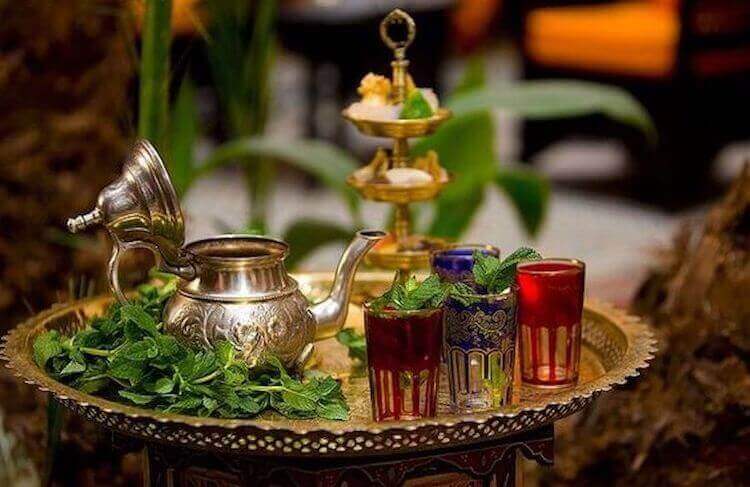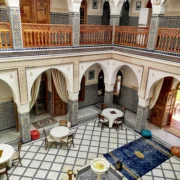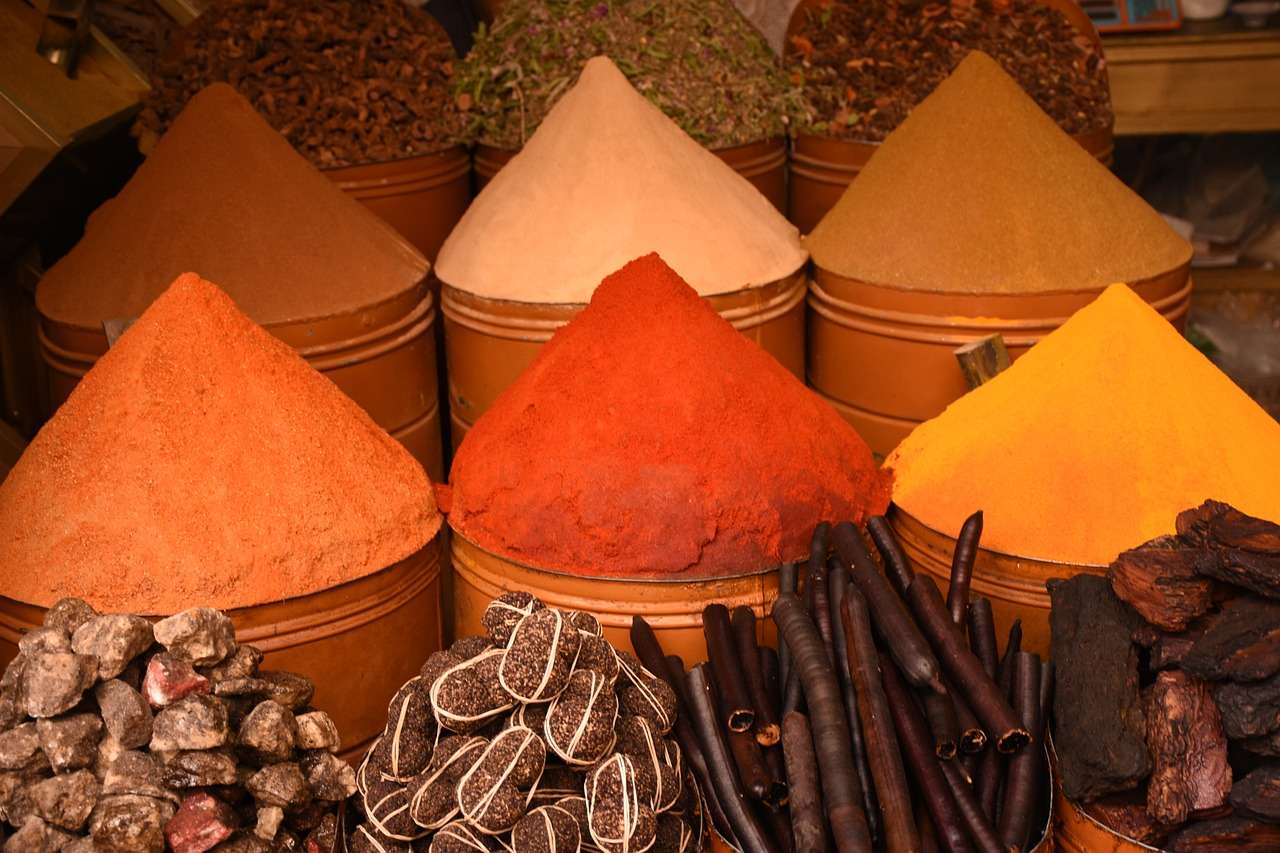
Moroccan Restaurant Secrets for a Flavorful Adventure
Table of Contents
ToggleWhy Moroccan Restaurant is a Must-Visit for Food Lovers
Imagine stepping into a world where the air is filled with the tantalizing aroma of exotic spices, the ambiance is rich with vibrant colors and intricate patterns, and every bite you take tells a story of centuries-old culinary traditions. That’s the magic of a Moroccan restaurant. As a travel enthusiast, I’ve had the pleasure of dining in various eateries around the globe, but Moroccan restaurants hold a special place in my heart. They offer not just a meal, but an immersive experience that engages all your senses.
The Unique Charm of a Moroccan Restaurant
Traditional Ambiance: The Magic of Moroccan Decor
Walking into a Moroccan restaurant is like entering a different realm. The decor is a feast for the eyes, featuring:
- Intricate Mosaic Tiles: Walls adorned with zellige tiles in geometric patterns.
- Ambient Lighting: Soft, warm glow from ornate lanterns casting mesmerizing shadows.
- Plush Seating: Comfortable cushions and low seating arrangements that invite relaxation.
This setting isn’t just about aesthetics; it’s designed to make you feel at home, encouraging you to linger, savor your meal, and engage in meaningful conversations.
Hospitality & Culture: What to Expect in a Moroccan Restaurant
In Moroccan culture, hospitality is paramount. When you dine at a Moroccan restaurant, expect to be treated like family. The staff often go above and beyond to ensure your experience is memorable. It’s customary to start with a warm greeting and, in many cases, a ceremonial handwashing—a gesture symbolizing purity and respect.
Iconic Dishes You Must Try at a Moroccan Restaurant

Tajine: The Heart of Moroccan Cuisine
If there’s one dish that epitomizes Moroccan cooking, it’s the tajine. Named after the earthenware pot it’s cooked in, a tajine is a slow-cooked stew that combines meat, poultry, or fish with a medley of vegetables and aromatic spices. The conical lid of the pot helps circulate steam, ensuring the dish remains moist and flavorful. Popular variations include:
- Chicken with Preserved Lemons and Olives: A harmonious blend of tangy and savory flavors.
- Lamb with Prunes and Almonds: A delightful mix of sweet and savory, with tender meat that melts in your mouth.
Couscous: Morocco’s National Dish
Often served on Fridays, couscous is more than just a meal; it’s a tradition. This dish features steamed semolina grains topped with a hearty stew of meat and vegetables. The fluffy texture of the couscous absorbs the rich flavors of the stew, making each bite a delightful experience.
Pastilla: A Sweet & Savory Delight
For those who enjoy a fusion of flavors, pastilla is a must-try. This flaky pastry is traditionally filled with spiced pigeon meat, almonds, and eggs, all encased in layers of thin phyllo dough. The entire pie is dusted with powdered sugar and cinnamon, creating a unique blend of sweet and savory that’s sure to tantalize your taste buds.
Mint Tea & Moroccan Desserts
No Moroccan meal is complete without a glass of mint tea. Known as “Moroccan whiskey,” this sweet, refreshing beverage is typically poured from a height to create a frothy top—a practice that enhances its flavor and showcases the server’s skill.
When it comes to desserts, Moroccan cuisine offers a variety of treats, such as:
- Chebakia: Sesame cookies shaped into intricate designs, fried, and coated in honey.
- M’hanncha: Also known as “the snake,” this almond-filled pastry is coiled to resemble a serpent and baked to perfection.
Check out this guide for more Moroccan food & drinks here
Why Moroccan Restaurants Offer a Unique Dining Experience
The Role of Spices & Flavors in Moroccan Cooking
Moroccan cuisine is a symphony of flavors, thanks to the generous use of spices. Commonly used spices include:
- Cumin
- Coriander
- Saffron
- Cinnamon
- Paprika
These spices are artfully combined to create complex, layered flavors that are both bold and harmonious.
Dining Etiquette & Traditions in a Moroccan Restaurant

Dining in a Moroccan restaurant is as much about the experience as it is about the food. Here are some traditions to be aware of:
- Eating with Hands: It’s customary to eat with your right hand, using bread to scoop up food.
- Sharing Platters: Meals are often served family-style, with communal dishes that everyone shares.
- Pace of Dining: Meals are leisurely affairs, encouraging diners to relax and enjoy each course without rush.
Finding the Best Moroccan Restaurant Near You
What to Look for in an Authentic Moroccan Restaurant
To ensure an authentic experience, consider the following:
- Ambiance: Look for traditional decor elements like mosaic tiles, lanterns, and low seating.
- Menu: An extensive menu featuring classic dishes like tajine, couscous, and pastilla is a good sign.
- Reviews: Check online reviews for insights into the quality of food and service.
Top-Rated Moroccan Restaurants in the World

While there are many exceptional Moroccan restaurants globally, here are a few renowned ones:
- Le Marocain at La Mamounia (Marrakech, Morocco): Offers an upscale dining experience with a menu that celebrates traditional Moroccan flavors.
- Rick’s Café (Casablanca, Morocco): Inspired by the classic film “Casablanca,” this restaurant combines cinematic nostalgia with authentic cuisine.
- Moun of Tunis (Los Angeles, USA): A Hollywood staple since 1977, offering a vibrant dining experience complete with traditional hand-washing ceremonies and live belly dancing performances.
Traveling to Morocco? Experience Authentic Cuisine with The Moroccan Tours
Why Food Lovers Should Visit Morocco
For culinary enthusiasts, Morocco is a paradise. The country’s rich history and diverse cultural influences have culminated in a cuisine that’s both varied and delectable. From bustling street markets to high-end restaurants, there’s no shortage of opportunities to indulge your palate.
Dining at Local Moroccan Restaurants with Morocco Joy Tours
To truly immerse yourself in Moroccan gastronomy, consider booking a tour with Morocco Joy Tours. They offer curated experiences that take you to local eateries, allowing you to savor authentic dishes in their native setting. Whether it’s a hidden gem in the medina or a renowned establishment, The Moroccan Tours ensures you experience the best of Moroccan cuisine.

Savor the Rich Flavors of Moroccan Cuisine
Embarking on a culinary journey through a Moroccan restaurant is more than just dining; it’s an exploration of culture, tradition, and artistry. From the inviting ambiance to the flavorful dishes, every aspect is designed to provide a memorable experience. So, whether you’re a seasoned foodie or someone looking to expand your culinary horizons, a visit to a Moroccan restaurant promises to be a delightful adventure.
FAQs (Frequently Asked Questions)
What is the most popular Moroccan dish?
When it comes to Moroccan cuisine, tajine and couscous are the most iconic and beloved dishes. Tajine is a slow-cooked stew made with a variety of meats (like chicken, lamb, or beef), vegetables, and an irresistible blend of spices. It’s named after the traditional clay pot in which it’s cooked. Couscous, often served on Fridays, is another staple, made from steamed semolina grains and served with a flavorful stew of vegetables, meat, or sometimes both. Both dishes showcase the complexity and depth of Moroccan flavors, making them the go-to meals for locals and visitors alike.
Are Moroccan restaurants suitable for vegetarians?
Absolutely! Moroccan cuisine offers a variety of vegetarian-friendly dishes that are just as satisfying as those with meat. Dishes like vegetable tajine, couscous with vegetables, and lentil soup are widely available and packed with fresh vegetables, legumes, and aromatic spices. In fact, Moroccan meals are often built around vegetables, grains, and legumes, so vegetarians can enjoy authentic dishes without missing out on flavor. The use of spices like cumin, paprika, and saffron makes every vegetarian dish rich and full of depth, ensuring that even plant-based meals have the same level of excitement and complexity.
How can I experience authentic Moroccan food while traveling?
To truly experience authentic Moroccan food, you have to dive into the local food scene. When in Morocco, the best way to taste authentic dishes is by visiting local markets, known as souks, where you can sample street food and traditional snacks. You could also sign up for a food tour with The Moroccan Tours, which offers curated experiences where you can savor traditional Moroccan meals in local, family-run restaurants. If you’re not in Morocco, look for Moroccan restaurants that focus on authentic cooking techniques, offer classic dishes like tajine and pastilla, and create an immersive cultural atmosphere. Nothing beats the taste of fresh, local ingredients cooked with traditional Moroccan techniques.












